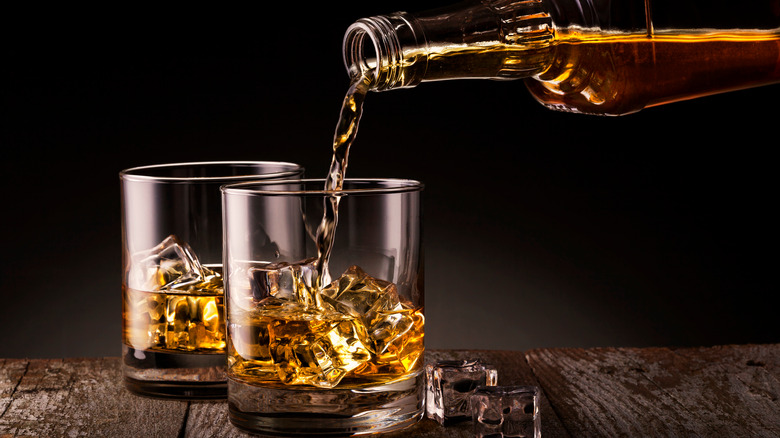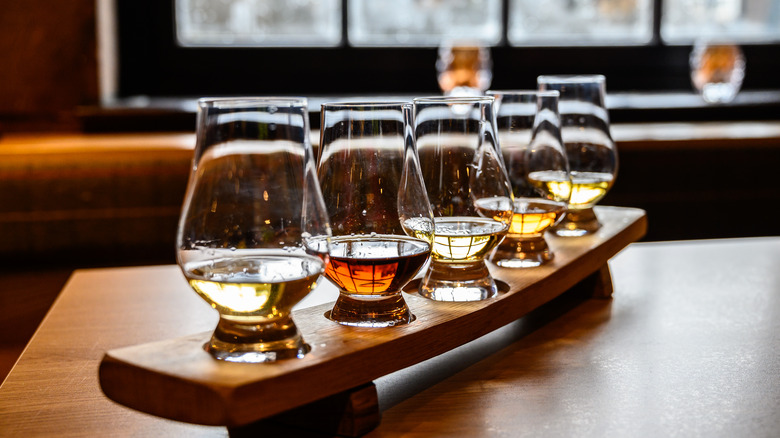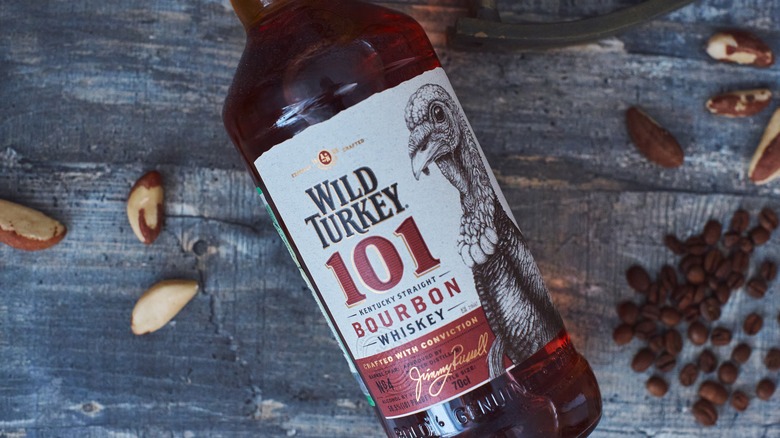When Is It 'Whiskey' And When Is It 'Whisky'?
If you're a fan of whiskey, you're in good company. This beloved spirit provided inspiration to some of history's most notable figures, including entertainers, heads of state, writers, and many others. For instance, legend has it that iconic crooner Frank Sinatra was actually buried with a bottle of Jack Daniel's Old No. 7. Exhibiting a similar level of devotion, famed journalist and author Hunter S. Thompson was legendary for his love of whiskey, as well as many other inebriating substances.
Of course, the spirit has a lot to offer the common man (and woman) as well when it comes to personal enjoyment. According to Statista, 76 million cases of whiskey were sold in the U.S. in 2021 alone. As for retail sales of straight whiskey, this figure amounted to a whopping $10.9 billion that same year, while the sale of blended versions equaled a little more than $1 billion. At the same time, there's no denying that whiskey is incredibly popular in the U.S. and elsewhere, but it's still subject to misconceptions and misinformation. One common misconception involves how the name of the spirit is actually spelled.
It's mostly a matter of location
Many consider the birthplace of modern whiskey to be 15th-century Ireland. However, the production of the spirit quickly caught on in Scotland soon after, which is part of the reason for the spelling variations that persist to this day. At the time, the Gaelic language was used in both Ireland and Scotland, although there were differences between how words were spelled and how the language was spoken. There were also quite a few differences between how these two nations manufactured whiskey, and these processes were eventually exported to the rest of the world.
Accordingly, the spelling varies based on the country in which the spirit is being manufactured. In the U.S. and Ireland, whiskey is the standard spelling. However, Canada, Scotland, and Japan-based manufacturers typically use the no-e whisky spelling. Along with spelling variations, there are also a few key differences in the spirits produced by different countries. For instance, Scotch whisky is usually distilled from barley and aged for an extended period of time for a richer flavor. On the other hand, Irish whiskey offers a sweet and nutty flavor profile, unlike Scotch varieties. And while the U.S. utilizes the same spelling as Ireland in whiskey production, American distillers have developed their own set of rules about the spirit.
The difference between bourbon and rye whiskey
In America, the majority of whiskeys fall into one of two categories. As a result, there are very strict rules and guidelines governing the manufacture of these spirits. When it comes to bourbon, aging must take place in an unused charred-oak barrel. As for the duration of the aging process, straight bourbon must be aged for at least two years to bear that designation. Otherwise, bourbon can be aged for any length of time and still meet the requirements. All bourbon must consist of fermented mash with a corn content of at least 51%. During distilling, the spirit must be less than 80% ABV. However, it must go into the barrel at 62.5% ABV after being diluted with water.
As for rye whiskey, it adheres to the same ABV standards as bourbon. However, it must enter the bottle at 40% ABV after maturation (which also takes place in unused charred-oak barrels). As for mash ingredients, this spirit requires a mash consisting of at least 51% rye grain. Unlike bourbon, rye whiskey can contain additional ingredients, such as flavor and color components. It can also be manufactured in locations other than the U.S., which is a requirement with bourbon. No matter which type of whiskey you ultimately prefer, keep in mind that the meticulous production standards are based on a centuries-old process.


